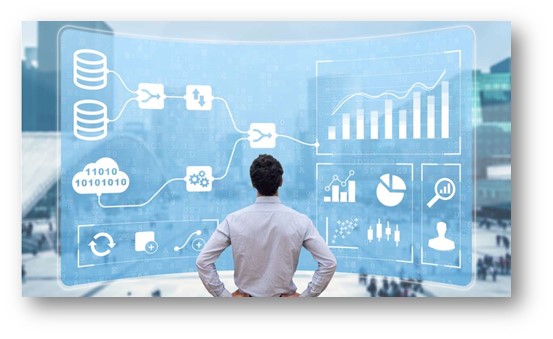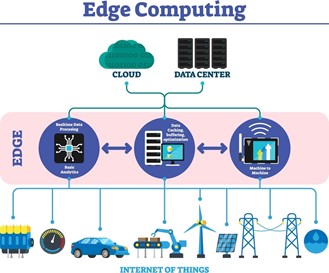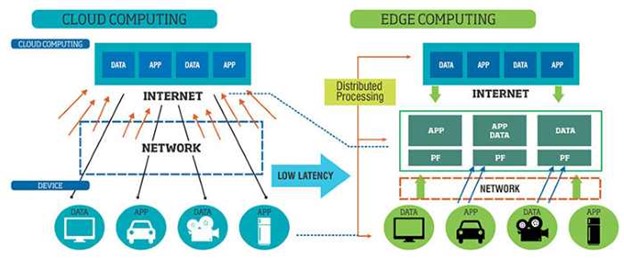Edge Computing and Distributed Cloud

Edge Computing and Distributed Cloud
by vivienne 10:00am Jan 08, 2025

As the digital landscape continues to evolve at breakneck speed, two cutting-edge technologies have emerged at the forefront of innovation: edge computing and distributed cloud. Both play essential roles in addressing the modern challenges of latency, data processing, and scalability, providing solutions for applications ranging from the Internet of Things (IoT) and smart cities to artificial intelligence and real-time analytics. Together, they’re redefining how businesses and developers architect, deploy, and manage services in a hyper-connected world.
What is Edge Computing?
Edge computing refers to processing data closer to its source—whether it’s a sensor, a device, or a user—rather than relying on a centralized data center. In traditional cloud computing, data is often sent to a remote data center, processed, and then sent back to the user. This setup, while efficient for many applications, introduces latency that can be problematic for time-sensitive processes.
In contrast, edge computing brings computation to the “edge” of the network, near the data’s origin. By reducing the distance that data must travel, edge computing minimizes latency, enabling faster responses and improving the overall user experience. This is especially critical for applications like autonomous vehicles, augmented reality, and industrial IoT, where even a few milliseconds can make a difference. 
What is Distributed Cloud?
The distributed cloud is an extension of cloud computing in which cloud services are deployed across multiple locations—regional data centers, edge sites, or even devices—rather than being centralized in a single data center. Distributed cloud enables cloud providers to deploy and run services closer to end users while maintaining a unified management structure and consistent service quality. This approach helps to overcome some of the limitations of centralized cloud models, such as latency, compliance, and availability.
By leveraging distributed cloud architecture, organizations can optimize performance, reduce network congestion, and ensure that data remains compliant with local regulations. Major cloud providers like Google, AWS, and Microsoft are investing heavily in distributed cloud models to meet the demands of a geographically diverse user base.
The Synergy of Edge Computing and Distributed Cloud
Edge computing and distributed cloud complement each other in a range of use cases, bringing value to industries that rely on real-time data processing, low latency, and distributed resource availability. Here’s how they work together:
1. Latency Reduction: Distributed cloud allows cloud resources to be closer to the user, while edge computing processes data at or near the source. Together, they dramatically reduce latency, which is crucial for applications in gaming, financial trading, and virtual reality.
2. Scalability and Flexibility: Distributed cloud models enable dynamic scaling across different geographic regions, while edge computing provides scalability at the local level. This combination supports seamless scaling for IoT devices, retail, and healthcare applications.
3. Data Privacy and Compliance: Edge computing allows data to be processed locally, minimizing data transfers and reducing exposure to cybersecurity risks. Distributed cloud offers the flexibility to store and process data according to local regulations, which is critical for businesses operating in multiple regions with different data protection standards.
4. Reliability and Redundancy: In a distributed cloud setup, multiple nodes can be used to ensure redundancy, reducing the risk of service disruption. Edge computing further enhances this reliability by distributing computational power across devices or local servers, ensuring that critical applications remain operational even if one or more nodes go offline. 
Challenges and Considerations
Implementing edge computing and distributed cloud architectures is not without challenges. Managing a distributed network can introduce complexities in terms of security, latency, and device management. Additionally, maintaining consistent performance and security standards across a dispersed infrastructure requires robust tools and monitoring.
Another challenge is data consistency, as edge devices must periodically synchronize with the centralized cloud. Security at the edge is also crucial, as distributed systems can create more potential attack points. Therefore, companies must employ stringent cybersecurity measures, including encryption, endpoint security, and regular monitoring, to protect data and maintain compliance. 
Conclusion
Edge computing and distributed cloud architectures are transforming how data is processed, stored, and managed, empowering businesses to deliver faster, more reliable, and secure services. By bringing computing power closer to the user and distributing resources across multiple locations, these technologies offer the responsiveness and flexibility required for next-generation applications.
As edge computing and distributed cloud continue to mature, they will open new avenues for innovation across industries. For organizations seeking to stay competitive in a fast-evolving digital world, understanding and leveraging these technologies will be essential in achieving agile, scalable, and resilient infrastructures.






